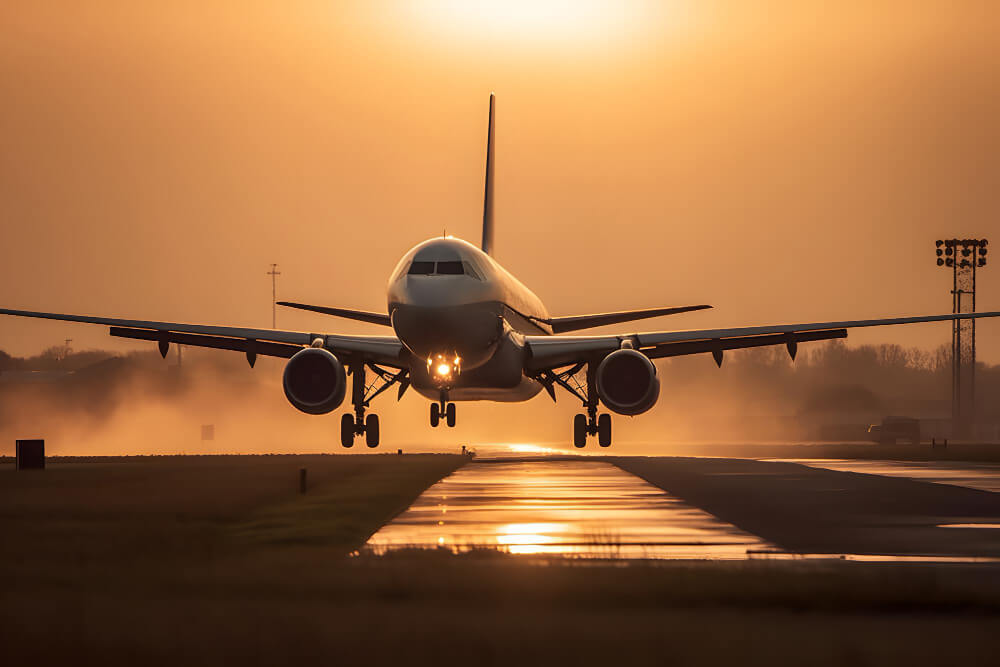What is ground effect and how is it generated
Ground effect, in aviation, refers to the phenomenon in which an aircraft experiences an increase in lift and a decrease in drag while flying close to the Earth’s surface, generally at an altitude lower than half its wingspan. This is primarily due to the interaction of airflow between the aircraft’s wing and the ground.
When an aircraft flies close to the ground, the air flowing beneath the wing compresses, increasing pressure and creating a “cushion” of air between the wing and the ground. This air cushion reduces aerodynamic drag and increases lift, allowing the aircraft to fly more efficiently with less power or speed.
Ground effect is most noticeable during takeoff and landing, when the aircraft is closest to the ground, but it can also occur during low-altitude maneuvers, such as low passes.
In addition to the compression of air beneath the wing, ground effect can also be related to changes in induced drag, which is the drag generated when lift is produced. This can have a significant effect on the aircraft’s behavior near the ground.
Analysis of pressure variations on the wing during ground effect operation
During an aircraft’s flight, the distribution of pressures on the wings is crucial for the generation of lift, which is the force that keeps the aircraft in the air. This distribution of pressures is influenced by various factors, including the shape of the wing, the angle of attack, and the airspeed.
Generally, on the upper surface of the wing (extrados), pressures tend to be lower than on the lower surface (intrados). This is because the wing profile is designed so that the air passing over the wing accelerates, resulting in a decrease in pressure according to Bernoulli’s principle. Meanwhile, on the intrados, the air tends to move more slowly, resulting in relatively higher pressure.
This difference in pressures between the extrados and the intrados of the wing results in a net upward force, known as lift. The greater the difference in pressures between the upper and lower parts of the wing, the greater the lift generated. This lift is essential to counteract the weight of the aircraft and keep it in flight.
Bernoulli’s theorem explains how the speed of airflow and air pressure are related in an incompressible fluid. In the case of an aircraft, this relationship applies to both the extrados and the intrados of the wing, contributing to the generation of lift.
How to control ground effect while flying
During early flights, it is essential for student pilots to master aircraft control when encountering ground effect. In this situation, the aircraft becomes more sensitive to control movements, especially in pitch, and requires a greater distance to travel on the runway.
To manage ground effect, it is advisable to make gentle corrections to the controls and wait for the aircraft to decrease its speed. As this happens, pulling back on the control stick can achieve a smooth and precise landing.
Although ground effect presents challenges in aircraft control, it also has positive aspects. For example, it significantly reduces induced drag, making the aircraft more efficient in terms of fuel consumption and overall performance. Therefore, not everything is difficult, right?
Ballooning during landing with ground effect
During the landing process, if ground effect is experienced and excessive pitch correction is made, the aircraft may tend to ascend, resulting in what is commonly known as “ballooning.”
In such circumstances, the best course of action is to perform a go-around, that is, increase engine power and regain altitude to abort the landing. This is because the aircraft is flying at a low speed and in landing configuration, which increases the risk of entering a stall situation or making a very abrupt and dangerous landing.
